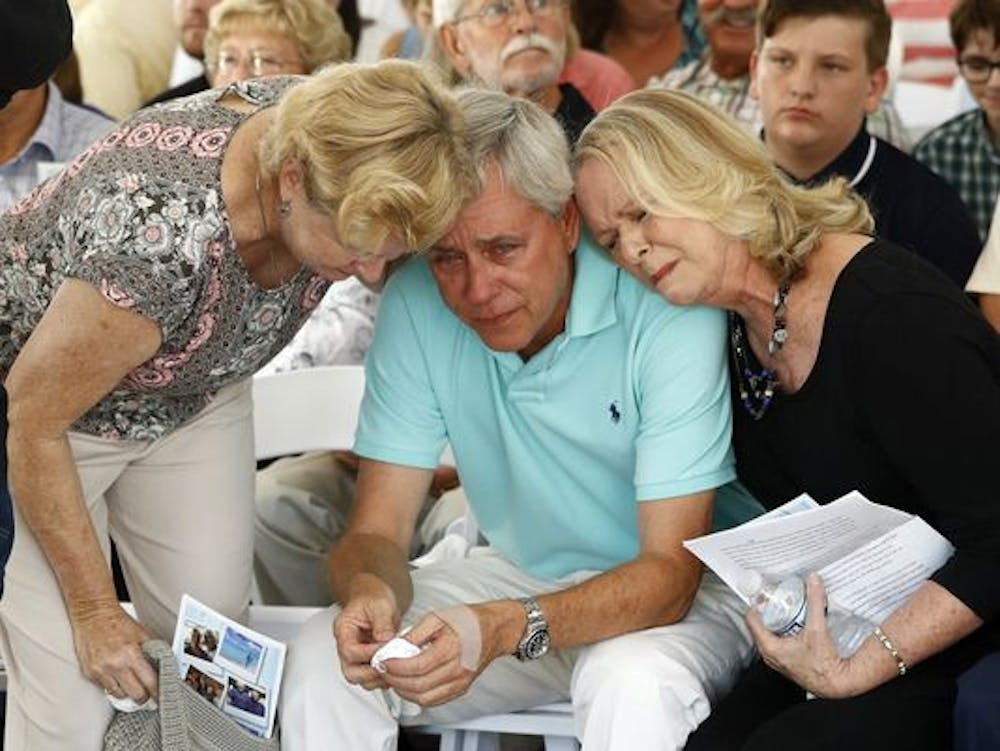To the Editors of the Middlebury Campus:
The first story I wrote for Maria Hiaasen was rejected.
I was a sophomore staff writer in her first period journalism class at Dulaney High School in Timonium, Maryland, excited but unprepared for the universe of beat writing and community framing. In response to my overconfident, slightly grammatically incorrect first work, she stated simply, “It needs more color.”
To my peers on the staff and me, color — the essential quotes or eloquent details that make a story worth reading — was always hard to get.
In my four years no teacher would ever be as hard on me, demand so much from me, and push me beyond what I thought was my best. But, despite the demand and the pressure, we loved her. With the constant push for more there was an underlying passion for the art of journalism; so clear that it lit up her face with every new story, innovative angle, or creative thought.
She loves journalism, but above that, she loves the students that she shares it with.
Ever since my three years of journalism with Maria Hiaasen, I have come to believe that there was something greater in every lesson she taught. First, most obvious, but most commonly missed, the simple fact that people are everything. The goal of every story assigned was to talk to people, hear, learn, and tell their stories.
As she said in a recent interview on CNN, “the key to success as a human being and, certainly, the key to success as a journalist, is to remember your humanity, to remember people’s feelings, to remember the human being behind the story. The other, is finding color in everything.”
https://www.youtube.com/watch?v=VP8LAd-pcrc
Three and a half years ago, we declared “Je Suis Charlie” after twelve journalists were killed in the name of the Islamic State. On Thursday, my former journalism teacher, and a woman who changed my life, became a widow after her husband Rob Hiaasen and four others were murdered in the name of twisted vengeance in Annapolis, Maryland at the Capital Gazette newspaper.
During late nights working on the paper after school my senior year, Rob would occasionally visit us and offer nothing but support. Now, I watch his wife, the person who taught me so much, talk gracefully about the hardest struggle of her life on CNN and MSNBC.
The loss of Rob is a loss of color. According to Baltimore Sun columnist Kevin Cowherd, as an editor and feature writer, Rob “was a master of asking questions of the people he wrote about. It was one of his strengths. He was also drawn to quirky characters. In all his writing he tried to bring out the humanity.”
He practiced the people-based, people-driven grassroots journalism that his wife taught me every day.
In an age of corporate broadcasting and migration away from physical newspapers, it is no secret that this craft is dying. Clickbait and fast facts are slowly replacing the Sunday column and community note. Ease and simplicity have become the norm in electronic journalism of the twenty-first century. While more people have access to obtaining news itself, where are the people inside this fast-paced journalism?
It’s important for this event to serve as a wake-up call for how journalists are treated in society. But to honor Rob and his wife, journalism should also be questioning what matters within itself. If the news is a projection of the society it represents, our society is a dreary, divided world. One of our greatest flaws as citizens of this nation, and at times of this college, is to see what makes us different before what makes us alike. If our news presented humans, rather than humans spun by bias driven reporting, how would we in our communities begin to see each other?
There is, no doubt, a war on journalism in our nation that clouds local-level storytelling. In this time of moral crisis over what matters in public discourse, let us not only demand the facts, but also the color. We may not need a “Je Suis Charlie” of this tragedy, but we need a turn of the major news sources of American journalism toward the journalism of Rob and Maria Hiaasen. It starts here in the community publications such as The Campus that are the voice of so many. To ensure that the freedom of the press remains, and even becomes more truly free, the color of life that connects us, rather than divides us needs to be omnipresent.
This isn’t an attack on the journalism of The Campus. It is a call to go beyond covering the facts of the stories that matter at Middlebury. Why do the members of the Young Republicans believe what they do? What inspires and drives our next student body president? Are there prior experiences that inspired students of color to form their own student-athlete coalition last spring? Talk to us, the people your paper represents. Know us. Tell our stories that are connected so deeply and powerfully to the problems and divisions of our nation. Ask the questions that catch us off guard, make us uncomfortable, and find the things that motivate us to believe what we do. Do not group us into a statistic. Do not follow the trends of national journalism in this nation. Find our color.
People matter. This is what I learned from Mrs. Hiaasen in room 201. These lessons, this journalism, changed us. We were shown humanity at its most basic level: A story of a person being told to others for the benefit of society. What story will you tell, editors of The Campus, and how will you tell it? How will you frame the students, faculty, staff, and greater community of Middlebury College?
Daniel Krugman is a member of the Middlebury College class of 2021.
More Color: A Call for the Journalism of the Hiaasen Family in the Wake of the Capital Gazette Shooting

Comments



